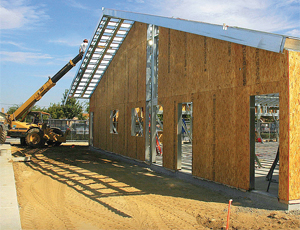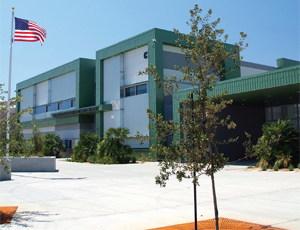The nation’s economic downturn has pulled the rug out from under new building and renovation programs at many school districts, colleges and universities. The education construction market has been particularly hard-hit by the collapse of the housing market. The U.S. homebuilding boom, particularly in parts of the Southeast and the Southwest, had been the engine for skyrocketing K-through-12 school enrollment and the resulting need for new schools.



The education market also has been negatively affected by sagging tax revenue, tight credit markets and, in the case of many private institutions and some public colleges and universities, sharp declines in the value of endowments. The Las Vegas area, where residential and commercial construction markets have swung from boom to bust in dramatic fashion, provides an example of how quickly the prospects have soured for contractors seeking school-related work. Through the first two-thirds of this decade, the Clark County School District had been seeing its student population grow by a predictable 10,000 to 12,000 students a year and had been opening an average of 10 new schools annually to keep pace, says Paul Gerner, the district’s associate superintendent for facilities.
As recently as three years ago, CCSD—the nation’s fifth-largest school district, with about 310,000 students—had been planning to add another 100 or so new schools by 2020. This fall, however, school enrollment in Clark County declined by 2,000, and Gerner says that given the uncertainty of Las Vegas’ economic future, it would be nearly impossible to predict how many new schools will be needed in the next five years, let alone the next 10.
“It’s an entirely new world,” says Gerner, who notes the bond money from a 1998 bond referendum is running out and that CCSD last year canceled plans for a new bond referendum because of the economy.
The last five new schools with funding tied to the 1998 referendum will be completed by July 2010. After that, CCSD will likely focus in the short term on renovating or replacing older school buildings, Gerner says.
The Ceres Unified School District in California’s Central Valley is facing challenges of its own. The school district’s planned $145-million capital program, which includes the construction of a new junior high school and two new elementary schools, plus dozens of expansion and modernization projects, was supposed to be paid for by the proceeds from a $60-million bond issue approved by voters last November, as well as more than $80 million from the state. But Fred Van Vleck, the district’s assistant superintendent of business services, says the district has received only $1 million of the promised state funds, largely due to California’s ongoing financial crisis.
And slumping housing values—and assessments—have slashed by almost half the amount of the bonds that Ceres can legally issue. Last November’s bond referendum limited the impact of the bond issue on homeowners to $60 per $100,000 of assessed valuation, but assessments have fallen by 60%. “We are pretty much maxed out on what we can sell, bondwise,” Van Vleck says.
The district is doing what it can to keep at least some work under way. For example, the $35-million cost of the new junior high school was to be divided evenly between Ceres and the state, but with hardly any state money in the pipeline, Ceres is paying for the project up front with its bond money and hoping to recoup the state’s share later. The two planned elementary schools are supposed to be paid for entirely with state money, however, leaving them in limbo for the time being.
The situation is better in Ohio, says Rick Savors, spokesman for the Ohio School Facilities Commission, a state agency that provides financial and technical support and project oversight for K-through-12 public schools throughout the state.
“We are spending about $4 million a day in state and local funds” on new schools and expansion and renovation projects, says Savors, adding that OSFC’s current three-year capital plan, which runs through June 2011, calls for spending a total of $4.1 billion. “We currently have 153 projects under construction and...

Post a comment to this article
Report Abusive Comment